Learn How to Grow Pomelo, which is also the juiciest and largest fruit from the citrus family! Here are all the details!
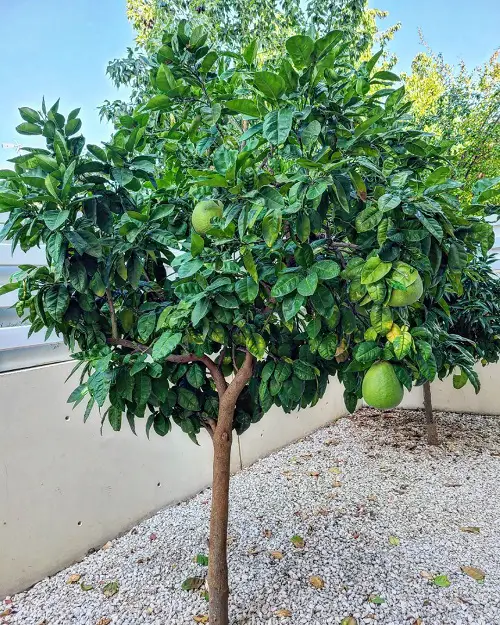
Check out all the details on How to Grow Pomelo to include this juicy fruit in your garden for a fresh harvest. It tastes amazing in salads and juices!
Learn about Growing Star Fruits here
Pomelo Fruit Information
Pomelo or Pummelo is the largest fruit of the citrus family. It can grow up to an impressive size of 8-12 inches. The fruits have a sweet and tart taste with easily removable orange-like thick pale yellow skin.
Other names: Citrus maxima, shaddock, pomelo, pummelo, pommelo, pamplemousse, or shaddok) jeruk besar, jeruk bali, jambua, limau betawi, limau bali, muli, som-o, ma-o, shouk-ton-oh, suha, lukban, kabugaw and buongon.
Get the Best Cluster Bean Grow Care Guide here
How to Grow Pomelo in Pots?
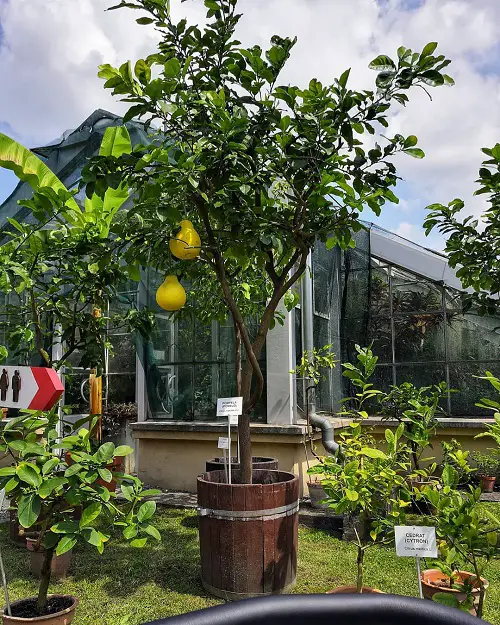
Use an 8-12 inches pot to start the plant and depending on the growth and spread, keep e-potting it in one size bigger pot.
You can grow pomelo easily with seeds and cuttings in early spring. However, both these methods take a considerable amount of time for the plant to reach the fruiting stage, so it would be a great idea to get a well-grown plant from a garden center.
Find the Best Monstera Albo Varieties here
Requirements for Growing Pomelo
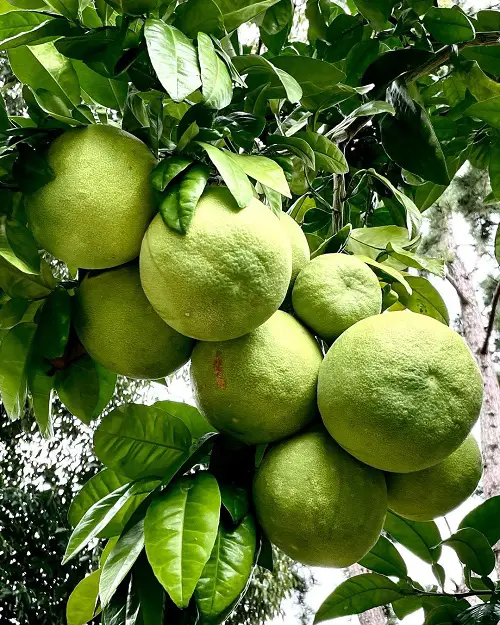
Sunlight
Like all citruses, pomelo needs full sunlight and good air circulation to grow large and quality fruits. Do not keep the plant in a shaded spot as it will result in leggy growth with smaller or no fruits.
Make sure it gets a minimum of 6-7 hours of bright sun every day. Follow the simple rule— the more sunlight it gets, the better it will be.
Soil
Amend the soil with plenty of organic matter and compost. This plant needs a well-draining and loose growing medium to grow best. A slightly acidic pH (5-6) is optimal for pomelo.
Add a handful of sand and leaf litter at the time of planting to improve drainage as the plant hates compact soil.
Watering
Pomelo grows best in a growing medium that stays a little on the moist side but that doesn’t mean you end up overwatering the plant. The best rule to follow is to water the plant when the top soil feels a little dry to the touch.
Do not water the plant on a daily basis and ensure the soil is never going dry completely. Water the plant more frequently in warmer and dry months as the fruits may fall if the growing medium is too dry.
Look at the Best Fittonia Varieties here
Taking Care of Pomelo
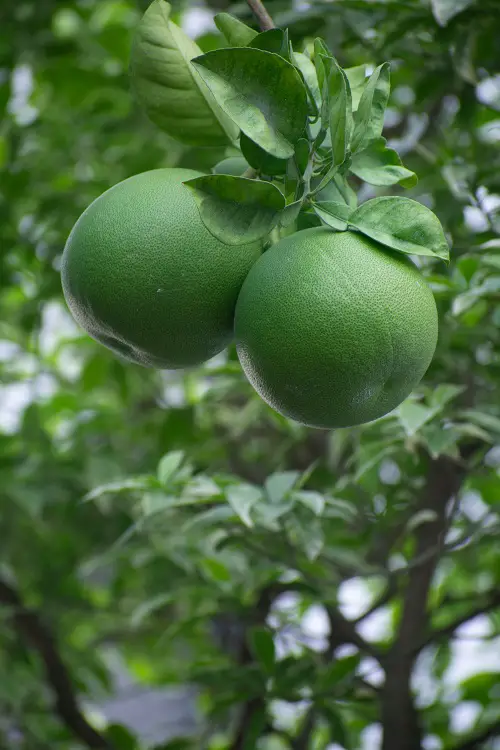
Fertilizer
If you want to increase the size, taste, and number of fruits, then use a 10-30-20 blend, once in 4-5 weeks. Do refer to the label for instructions.
A monthly dose of a handful of bone meal will greatly help the plant to grow good fruits.
Before colder months, it would be a good idea to amend the soil with plenty of organic matter, as it will promote root growth, which will enable the plant to absorb water and nutrients well.
Pruning
Remove dead, damaged, and diseased stems from time to time so that they don’t compete for nutrients. After harvesting, snip away leggy branches. It will promote air circulation and will also make sunlight reach every part of the plant.
Pests and Diseases
Pomelo is susceptible to aphids, spider mites, mealybugs, leaf-miners, leaf-eating caterpillars, fruit-boring caterpillars, scales, red mites, fruit flies, nematodes, and rats. You can kill these pests by using neem oil solution or insecticidal soap.
In diseases, look for citrus scab, sooty mold, and anthracnose. Avoid overwatering the plant, do not wet the foliage, and make sure it gets plenty of direct sunlight.
Want to Grow Lavender Plants? Click here
Harvesting Pomelo
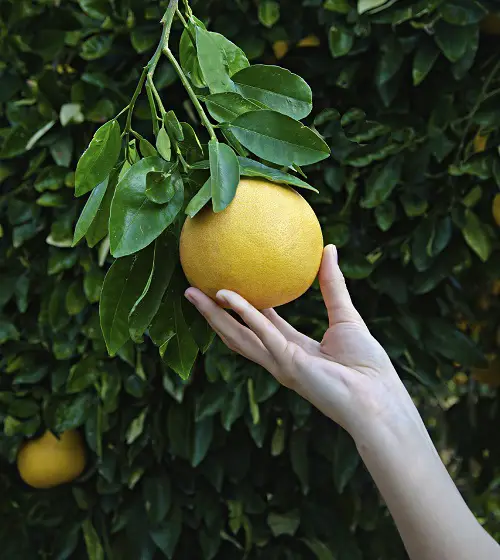
Ripe fruits are generally bright and have shiny yellow skin and are also heavier than unripe ones. Check the weight in your hands and snip them using a shear.
After harvesting, eat them right away as the fresh ones taste the best. You can also take out the juice and refrigerate it for 2-3 days.



How plant sweet seedless pomelo???
Jai greffer un pomelo avec un agrume orange thompson le resultat des pamplemousse -orange sucré